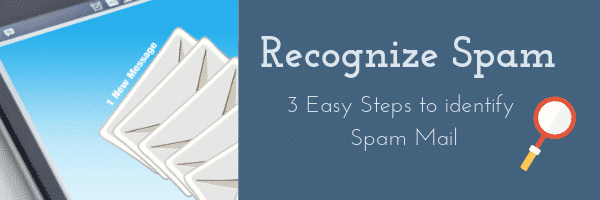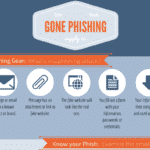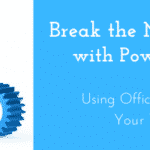Of Course I Can Recognize Spam!
Can’t everyone recognize spam?
By definition spam is unsolicited bulk messages sent through email. “Great, I have a definition now, but how does that help me?” Unsolicited, in this case means you have not had any interaction with this company, brand, or person. In other words, someone got your email address without your knowledge or consent. “Exactly how did they get my email address to send this junk to me?” An often-overlooked method of obtaining addresses is from your company website where it is proudly displayed or from another company selling your email. Yes, sadly some companies do sell email addresses of anyone that’s ever emailed them. Dive in with us with these 3 steps to Recognize Spam that finds your inbox.
1 – Identification
So then, now that we know what SPAM is, we can begin to identify it in our inbox. For example, perhaps you get a new message from Penn State Harrisburg about continuing education courses. You know you have not used them for previous courses, you are not even in supply management, and you have no idea why you are even getting this email.
2 – Email Structure
Let’s look at the email. Is it sent to you and only you? Does the senders address match the company it is being sent from? If the answer is yes, then you will want to look further down the email at the bottom to see if you can unsubscribe.
3 -Unsubscribing
If you have the option to unsubscribe, click the unsubscribe. If it is a legitimate unsubscribe, the mailing service will automatically unsubscribe you. You will not have to enter your email address. If the unsubscribe requires that you give your email address STOP!!! They emailed you. They know who you are.
Don’t become a Spammer
The CAN-SPAM Act requires that all those sending commercial email abide by a few rules. Because email is such as easy tool for marketing, as well as communication, it is easy to forget there are a few rules you need to follow.
Tell readers where your mail is coming from
Forging your email headers to make your mail look as though it is coming from another location can trigger many spam filters, as well as violate the CAN-SPAM Act. If you are using a service such as Constant Contact or MailChimp make sure that you are using your own domain and a real email address. For example, if you work for XYZ Company, you want your newsletter to come from newsletter@xyz.com and not ilooklikespam@newz.com. The from and to should be the person or business sending the email.
Content of your email and subject lines
The CAN-SPAM Act focuses on honesty. One of the first steps to Recognize Spam is to be sure your subject line reflects what is in the email. With the email itself, make sure you are using proper grammar and avoiding emojis as well as excessive use of punctuation. You may be excited about something, but chances are your recipient’s mail filter sees your !!! and ??? as possible SPAM. Make sure, too, that you avoid language that may trigger a filter like As Seen On TV, Save $$$, You’ve WON!!!, or anything with the words FREE. If you need to use those types of phrases, make sure it reads professionally, not like an infomercial.
Clean your lists
Keeping tidy lists is the second method to make it easier to Recognize Spam in your inbox. If you have lists you are using to send bulk mail, be sure you clean up your list before each mailing. Double check that anyone who opted out is off the list. If you are using a group contact list in outlook and you know you get three people that bounce each time to send to that group, remove them from the group. Bounced messages are a key metric for reputation on spam lists. If you send a lot of bad mail your organization will get blacklisted and the entire organization will not be able to send mail correctly until you are off the blacklist.
Allow for Opt-Outs and Unsubscribes
Our last method to Recognize Spam emails is often overlooked. When you are sending newsletters, or any type of bulk email, be sure there is way to opt-out or unsubscribe. Most services have this feature built into each mailing, but if you are not using a service you may have to manually clean your list. By law you must offer a way to unsubscribe and you have 10 days in which to unsubscribe those who ask.
Email is still one of the most effective ways to reach your customers and residents, but if you abuse the medium you are using, you can ruin the reputation of your organization. Simply practice these few rules of email marketing and you will do fine. If you are not sure how to set up an effective campaign, or want to start using a newsletter system, we can help you get started.
Need a few other Tips and Tricks? Check out our articles on Spear Phishing, Function Keys, and Quicks Steps in Outlook.





